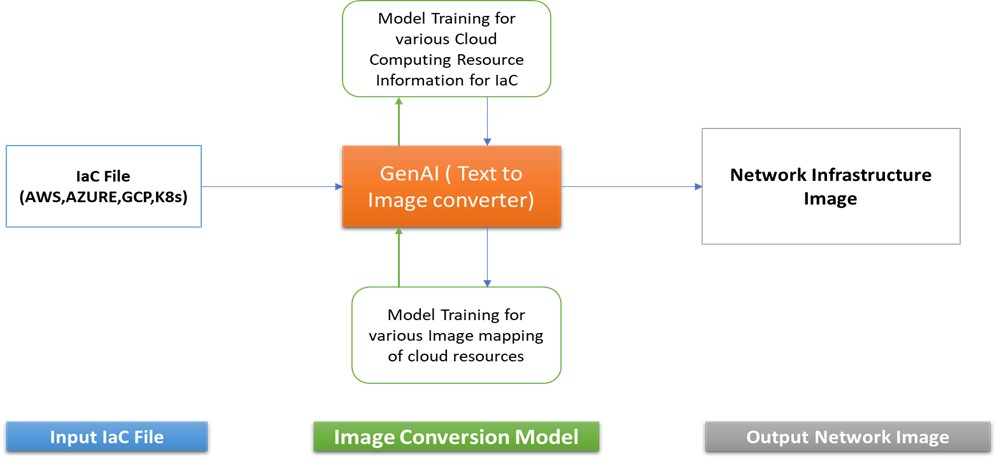In cloud computing, IaC (Infrastructure as Code) becomes a game-changer for infrastructure provisioning. Here’s a breakdown:
What is IaC in Cloud Computing?
Imagine you could treat your entire cloud infrastructure – servers, storage, networking – like software code. That’s the magic of IaC. Instead of manually configuring each element through a web console or command line, IaC lets you define everything in configuration files.
These files become the blueprint for your cloud infrastructure, enabling:
Automation: No more clicking through endless menus! IaC automates the entire provisioning and configuration process within the cloud platform.
Repeatability: Need identical cloud environments for development, testing, and production? IaC lets you define your infrastructure once and deploy it consistently across all environments.
Version Control: Track changes to your infrastructure configurations just like with software code. This allows you to revert to previous setups if needed and collaborate effectively on infrastructure changes.
How is Infrastructure Provisioned with IaC?
Here’s a simplified view of the IaC provisioning process in the cloud:
Define Your Infrastructure: You write configuration files using IaC tools like Terraform, CloudFormation (AWS), or Ansible. These files specify the resources you need (e.g., virtual machines, storage buckets, networking components) and their configurations.
Apply the Code: You execute the IaC code using the chosen IaC tool. This sends the configuration information to the cloud platform.
Cloud Platform Takes Action: The cloud platform interprets your IaC code and provisions the resources based on your specifications. It automatically sets up the servers, storage, networking, and any other resources you defined in your code.
Benefits of IaC for Cloud Provisioning:
Faster Deployments: IaC eliminates manual configuration, significantly reducing deployment times.
Reduced Errors: Human error is minimized with automated provisioning based on code.
Consistent Infrastructure: Repeatability ensures all your environments are configured identically.
Improved Collaboration: Version control allows teams to work together effectively on infrastructure changes.
Scalability Made Easy: Scaling your cloud infrastructure becomes a breeze by modifying the IaC configuration.
IaC brings automation, repeatability, and consistency to cloud infrastructure provisioning, making it a cornerstone of modern cloud deployments.
Demystifying Your Cloud with IaC Visualization
Imagine having a bird’s-eye view of your sprawling cloud infrastructure, all generated from your Infrastructure as Code (IaC). This is precisely what IaC to network topology conversion offers. By feeding your IaC configuration into a specialized Generative AI (GenAI) model, you can unlock a high-level visual representation of your network layout.
Benefits of IaC Visualization:
Instant Clarity: Ditching complex code for a visual map empowers you to grasp your cloud infrastructure’s network design at a glance. This is immensely valuable for managing intricate deployments or bringing new team members up to speed quickly.
Proactive Problem Solving: The visual representation might expose potential configuration inconsistencies or inefficiencies lurking within your network. This proactive approach allows you to identify and address issues before they disrupt operations.
Improved Communication: A network topology map fosters clear communication between teams. Developers, security professionals, and operations staff can all gain a shared understanding of the infrastructure, facilitating collaboration and troubleshooting.
Technical Considerations:
GenAI Model Training Matters: The GenAI model’s effectiveness hinges on its training data. A model trained on a massive dataset of diverse IaC configurations and corresponding network topologies will deliver the most accurate translations.
IaC Language Compatibility: Not all GenAI models are created equal. Ensure the model you choose is compatible with the specific IaC language (e.g., Terraform, Ansible) used to define your infrastructure.
The Future of IaC Visualization:
As GenAI technology continues to evolve, we can expect even more sophisticated IaC visualization capabilities. Imagine models that not only generate network topologies but also highlight potential security vulnerabilities or resource optimization opportunities within your infrastructure. This holds immense potential for simplifying cloud infrastructure management and ensuring ongoing security and efficiency.
Simplifying Cloud Network Topology with Infrastructure as Code (IaC) and AI
This approach aims to automate network topology visualization for different cloud providers using IaC files and a Generative AI model. Here’s a breakdown:
- IaC File as Input: You provide your infrastructure as code template (IaC) in the format specific to your chosen cloud provider, like Azure Resource Manager (ARM), AWS CloudFormation, or Google Cloud Deployment Manager.
- AI Model Scans and Maps Resources: A Generative AI model scans your IaC file line by line. It identifies and maps the defined cloud resources to corresponding visual components representing services like virtual machines (VMs) in each cloud provider (e.g., VM for Azure, EC2 for AWS, and Compute Engine for GCP).
- Model Training: The AI model is trained on a dataset of IaC templates and their corresponding visual representations. This training allows it to accurately recognize different cloud resources and their icons across various cloud providers.
- Connecting the Dots: Once trained, the model analyzes the relationships between resources in your IaC file. It identifies connections and data flow between them. These connections are then visualized as lines linking the corresponding resource icons.
- Network Architecture Output: The final output is a network diagram representing your cloud infrastructure. This diagram can be delivered in two formats:
Image: A static image file (e.g., PNG, JPG) showing the complete network topology.
Interactive HTML Components: An interactive web page where you can explore the network architecture. Clickable elements might reveal details about specific resources or connections.
Flow diagram for IaC to Cloud Resource Network visualization

Overall, this approach leverages IaC and AI to streamline cloud network visualization, making it easier to understand and manage your cloud infrastructure.
Conclusion:
IaC visualization, powered by AI, transforms complex code into a clear network map. This unlocks an instant understanding of your cloud infrastructure, enabling proactive problem-solving and better team communication. While technical considerations exist, the future promises even smarter visualization tools, streamlining cloud infrastructure management and ensuring ongoing security and efficiency.








